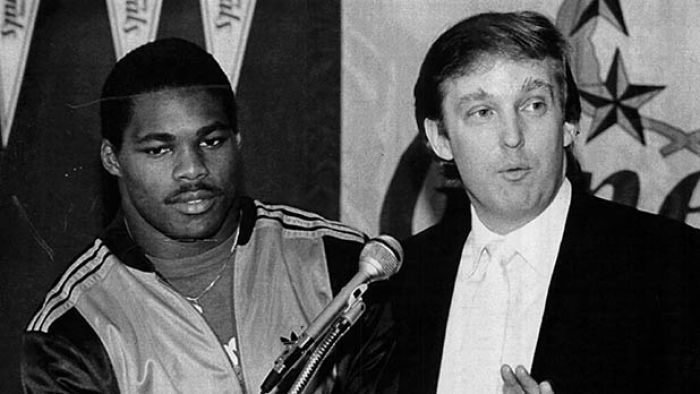How Did Donald Trump Do as a Pro Football Team Owner?
Credit: The Sporting News / Getty Images
For some football fans, Donald Trump's presidential campaign may feel like an instant replay of his time as owner of the defunct United States Football League's New Jersey Generals.
Trump is running for office under the banner (and rope-trimmed hat) of "Make America Great Again." He has said that he has no time to be politically correct, that the country's problems need immediate fixing, and he has no patience for tiptoeing around issues or even being polite to people. He's rocketed to the top of the GOP polls behind those ideas.
RELATED: Behind the Scenes of HBO's Hard Knocks
But the way he's running his campaign is nearly identical to how he helped run his football team, and the short-lived USFL, into the ground 30 years ago.
The USFL began play in 1983 as a spring alternative to the NFL but lasted only three seasons despite luring Heisman Trophy winners and NFL MVPs to play a fast, fun, furious brand of football. The USFL was where all-time greats like Hershell Walker, Steve Young, Reggie White, and Jim Kelly got their start. No slouches, 187 USFL players went on to play in the NFL. But many point to Trump's heavy influence as the reason why the league folded.
Here's what the USFL experience tells you about Trump:
He Hires the Right PeopleTrump bought the Generals after the 1983 season, and did turn the team around with shrewd player, coaching, and management moves, such as signing NFL MVP Brian Sipe and hiring head coach Walt Michaels. The team more than doubled its number of wins in Trump's first season as owner, so if American voters can glean anything from his time with the Generals it's that he has a talent for picking the right people to do the job. He could assemble a pretty solid cabinet in Washington.
He Is Not A Team PlayerBut just like he is viewed as a political outsider, Trump was seen as a new brand of football owner back then with deep pockets, a big mouth, and no interest in slowly cultivating the growth of the new league. Rather than placing his interest in growing the league, some believe Trump was only out for himself, and many feel the same could be said about his interest in becoming the leader of the free world.
"Donald wanted to be a big shot, and his entree to being a big shot was he bought himself a football team," Charlie Steiner, the voice of the Generals, said in Small Potatoes: Who Killed the USFL, ESPN's 30 for 30 documentary about the USFL.
He Is Not A Patient ManThose impatient and egomaniacal qualities clashed with those of the USFL's founding father, David Dixon, who spent more than 15 years researching how an alternative league could find success alongside the more established NFL. Dixon was an antiques dealer who helped to bring the Saints to New Orleans in 1966 and later devised the USFL to occupy the barren football landscape of the spring and summer.
Slow and steady were traits also associated with the Tampa Bay Bandits, the only original USFL team to have the same owner, head coach, and home field for all three years of its existence. The Bandits were owned by Canadian sportsman and entrepreneur John Bassett, who clashed with Trump over ideas on league expansion and moving the USFL to the fall. Their teams formed a quick rivalry. Bassett was of the Dixon school, preaching calculated growth over biting off more than the league could chew. Trump doesn't work that way.
RELATED: Australian Rugby Star Jerryd Hayne Chases his NFL Dream
He Wants Things Done His WayMore than anything, Trump lobbied to move the USFL from the spring to the fall, a season already owned by the more powerful NFL. The attempt to move to the fall in 1986 is universally seen as the idea that eventually led to the league's demise.
With Trump banging the drum to take on the NFL head-to-head in 1986, the USFL filed an antitrust lawsuit against the big boys, arguing that the NFL held a monopoly over TV rights and stadium venues. It was a huge gamble, as the USFL, with sagging attendance and TV ratings, was seeking a decision that would have amounted to $1.7 billion in damages.
When He Loses, Other People Get HurtBut Trump's greed is considered the dynamite that blew the whole case up. During the trial, Trump attempted to move the goalposts, so to speak, and attempted to force a merger between the two leagues, which moved the jury to rule in favor of the USFL, but awarded it only $1 in damages. Antitrust laws tripled it to $3, which effectively bankrupted the league and forced USFL owners to suspend operations.
"It was a nice experience," Trump concluded. "It was fun. We had a great lawsuit."
